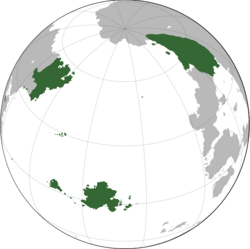Trans-Tenific Partnership
Trans-Tenific Partnership Trans-Tenific Partnerſhip (Furbish Fluvan) | |
|---|---|
 Location of Trans-Tenific Partnership members | |
| Location | Surrounding the Tenific Ocean |
| Administrative centers | CITY, COUNTRY (role) CITY, COUNTRY (role) CITY, COUNTRY (role) CITY, COUNTRY (role) |
| Largest city | Boston, The Furbish Islands |
| Official languages | Agnian Eilandwons Fluvan Gagian Niagaran Serran Temrian |
| Type | Economic union, Military alliance |
| Member states | |
| Leaders | |
• Chairman of the Council of Ministers | NAME |
• Chairman of the Economic Council | NAME |
• Chairman of the Defense Council | NAME |
• Supreme Allied Commander Stratea | General NAME |
• Supreme Allied Commander Abos | General NAME |
| Establishment | |
| 1 January 1990 | |
| 1 January 1999 | |
The Trans-Tenfic Partnership, or TTP, previously the Chatrois-Orange-Kolding Cooperative, also known as the COK Cooperative or COKC, is an economic and military alliance between member states in the northwestern Tenific Ocean.
Ideas of a northwestern Tenific Ocean alliance have been discussed by leaders of many countries since the end of the First Great War. The government of Agnia pushed hard for an alliance following the end of the war, though talks went nowhere. They once again proposed an alliance following the Coalition defeat in the Second Great War, which went nowhere, and again following TBDWAR but talks ended after the Revolutionary Committee for Reform took over Gagium in 1971. After the Third Great War ended, the Furbish government revived talks of an alliance with the new governments of Gagium and Perlsienne. The result was the Treaties of Chatrois, Orange, and Kolding, establishing the COK Cooperative in 1990. Three more countries joined the Cooperative: Greater Niagara in 1992, the Agnia in 1996, and Saint Sienia in 1997. The same year, the parties began to negotiate the Saint Sienia Treaty, which greatly expanded the role of the TTP. It was signed and ratified in 1998, coming into force at the beginning of 1999. Atocha, the Patriarchate of Mavona, and the Shkodër Federation joined together in 2004.
insert politics here
The TTP maintains an active foreign policy. TTP peacekeepers have been sent to conflicts around the world, including Gryva and the Gulf of Attily.
